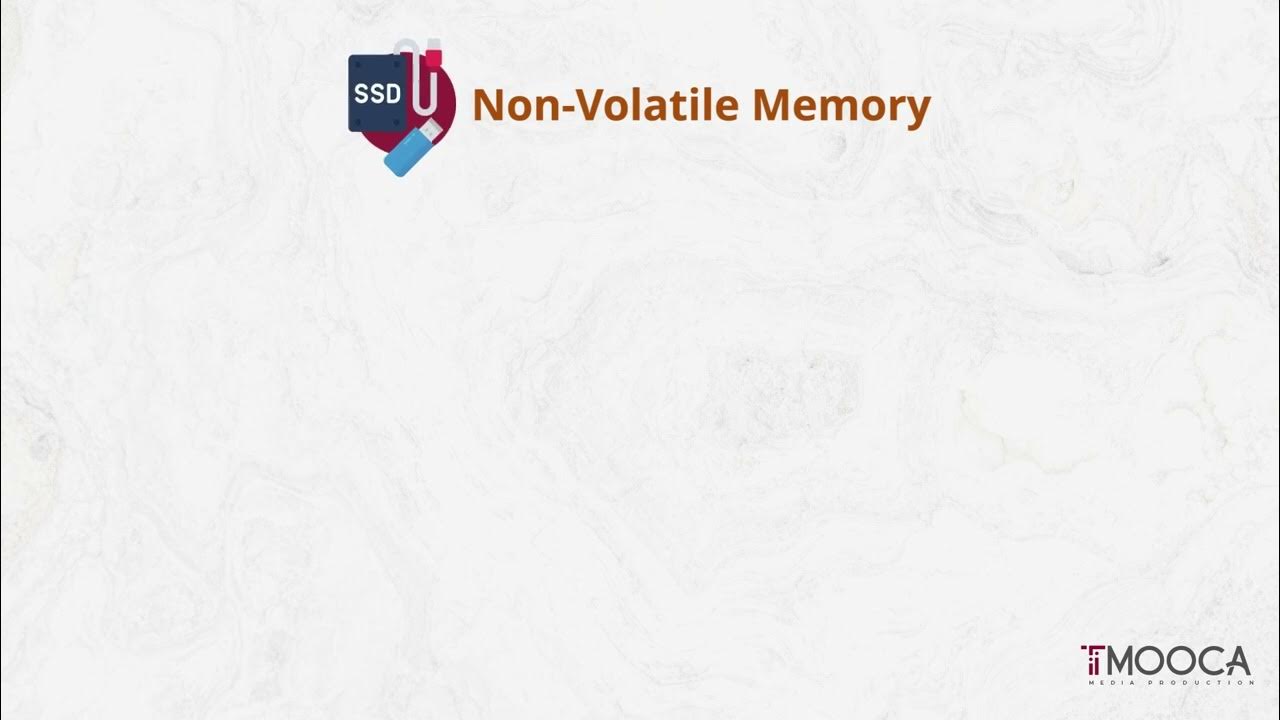What Is Flash Memory?
Summary
TLDRThis video provides an overview of flash memory technology, explaining its significance as a non-volatile, low-cost memory solution widely used in devices like thumb drives, SSDs, and BIOS boot memory. It highlights the evolution from EEPROM to flash memory and details the workings of NAND and NOR flash types. Key concepts include the speed and ease of initial programming, contrasted with the slower, more complex process of erasing and rewriting. The video also touches on the durability of flash memory and how frequent writing can degrade its structure over time.
Takeaways
- 💾 Flash memory is the leading memory technology due to its low cost per bit and widespread usage.
- 🔋 Flash memory is non-volatile, meaning data is retained even when power is removed.
- 🗂️ Flash gets its name from the need to erase an entire sector or block before reprogramming, even if just one bit needs to change.
- 💡 Flash memory is sold in a completely erased state (all bits set to 1), and only bits that need to change to 0 are modified during writing.
- ⏳ Writing flash the first time is fast, but rewriting requires erasing and reprogramming an entire section, making the process slower.
- 🕒 Erasing and reprogramming a block of flash can take milliseconds, while fully erasing an IC can take minutes.
- ⚡ NAND flash is the most cost-effective type of flash memory, commonly used in large-scale storage like USB drives and SSDs.
- 💻 NOR flash is more expensive than NAND but allows random access, making it ideal for BIOS and boot code storage.
- ⚠️ Flash memory has limited write-erase cycles, with NAND typically supporting 1,000-10,000 cycles and NOR supporting 10,000-100,000 cycles.
- 📊 A rough cost-per-bit hierarchy: NAND flash is the cheapest, followed by NOR flash and DRAM, with EEPROM and SRAM being more expensive.
Q & A
What is flash memory, and why is it considered the 'king' of memory ICs?
-Flash memory is a type of non-volatile memory, meaning it retains data even when power is removed. It is considered the 'king' of memory ICs due to its low cost per bit and widespread use in various applications, making it the most shipped memory type in terms of units and revenue.
What does 'non-volatile' mean in the context of flash memory?
-'Non-volatile' means that the data stored in flash memory is retained even when the power is turned off, unlike volatile memory types like DRAM, which lose data when power is lost.
What is the historical significance of the EEPROM gate in flash memory?
-In the 1980s, Japanese scientists discovered that the extra gate in EEPROM (used for individual byte rewriting) wasn't needed if users could erase an entire memory section at once, leading to a simpler and cheaper design for flash memory.
Why is flash memory called 'flash'?
-Flash memory is named for its ability to perform an 'all-bits erase' operation, where an entire sector or block of memory must be erased even if only a single bit within it needs to change from 0 back to 1.
How does the process of writing to flash memory differ between the first write and subsequent writes?
-The first write to a flash memory chip is relatively fast, as only the bits that need to change to 0 are written. However, if a bit needs to be changed back from 0 to 1, the entire memory sector must be erased, making subsequent writes slower.
What is the difference between NAND flash and NOR flash?
-NAND flash is less expensive and is suited for applications like memory sticks and solid-state drives because it reads and writes data in sequential blocks. NOR flash, while more costly, allows random access reading, making it ideal for BIOS and configuration data storage.
Why is erasing a flash memory block necessary before writing new data?
-Erasing a flash memory block is necessary because bits in flash memory can only be programmed from 1 to 0 directly. To change a bit back from 0 to 1, the entire memory block containing that bit must be erased before rewriting the data.
What is the typical lifespan of NAND and NOR flash memory in terms of write cycles?
-NAND flash memory typically supports around 1,000 to 10,000 erase/write cycles before wear and tear degrade its structure, while NOR flash can handle about 10,000 to 100,000 cycles.
Why might a microcontroller include NOR flash memory onboard?
-Microcontrollers often include NOR flash memory for storing boot code and configuration settings, as NOR flash allows for random access reads, making it ideal for such data that is not frequently updated.
How does the cost per bit of NAND flash compare to other memory types like DRAM and SRAM?
-NAND flash has the lowest cost per bit among memory types, making it cost-effective for large storage applications. DRAM and NOR flash have higher costs per bit but offer different access and performance benefits, while SRAM and EEPROM are even more expensive per bit due to their specialized applications.
Outlines

This section is available to paid users only. Please upgrade to access this part.
Upgrade NowMindmap

This section is available to paid users only. Please upgrade to access this part.
Upgrade NowKeywords

This section is available to paid users only. Please upgrade to access this part.
Upgrade NowHighlights

This section is available to paid users only. Please upgrade to access this part.
Upgrade NowTranscripts

This section is available to paid users only. Please upgrade to access this part.
Upgrade NowBrowse More Related Video

10+ Key Memory & Storage Systems: Crash Course System Design #5

Primary Memory : Types and differences from Secondary Storage Memory

Computer Concept - Module 3: Computer Hardware Part 1A (4K)

Y2Mate is Memory & Storage Crash Course Computer Science #19 TQCr9RV7twk 1080p 1654341045509

18. OCR A Level (H046-H446) SLR4 - 1.2 BIOS

CH01_VID04_Memory Essentials
5.0 / 5 (0 votes)